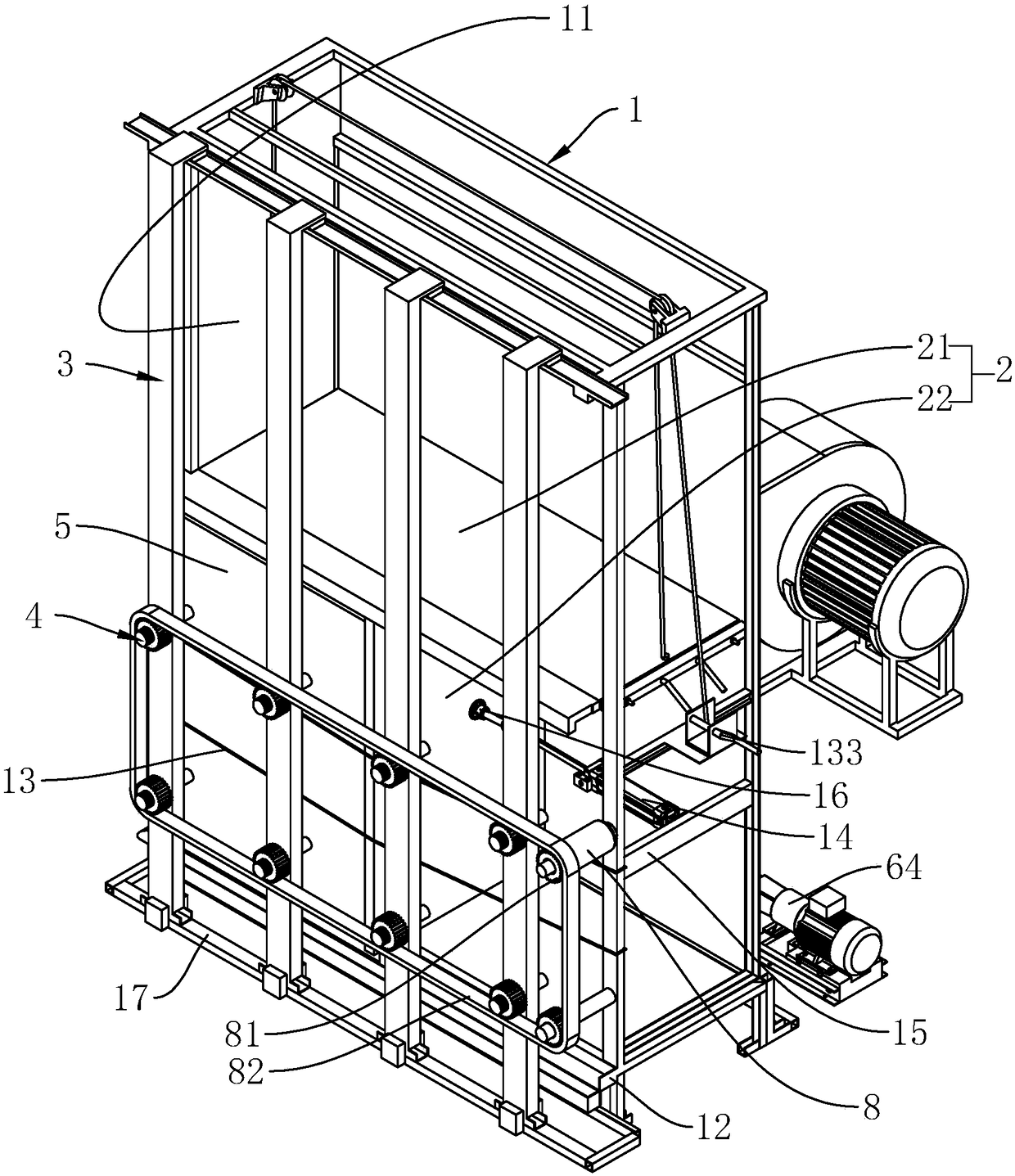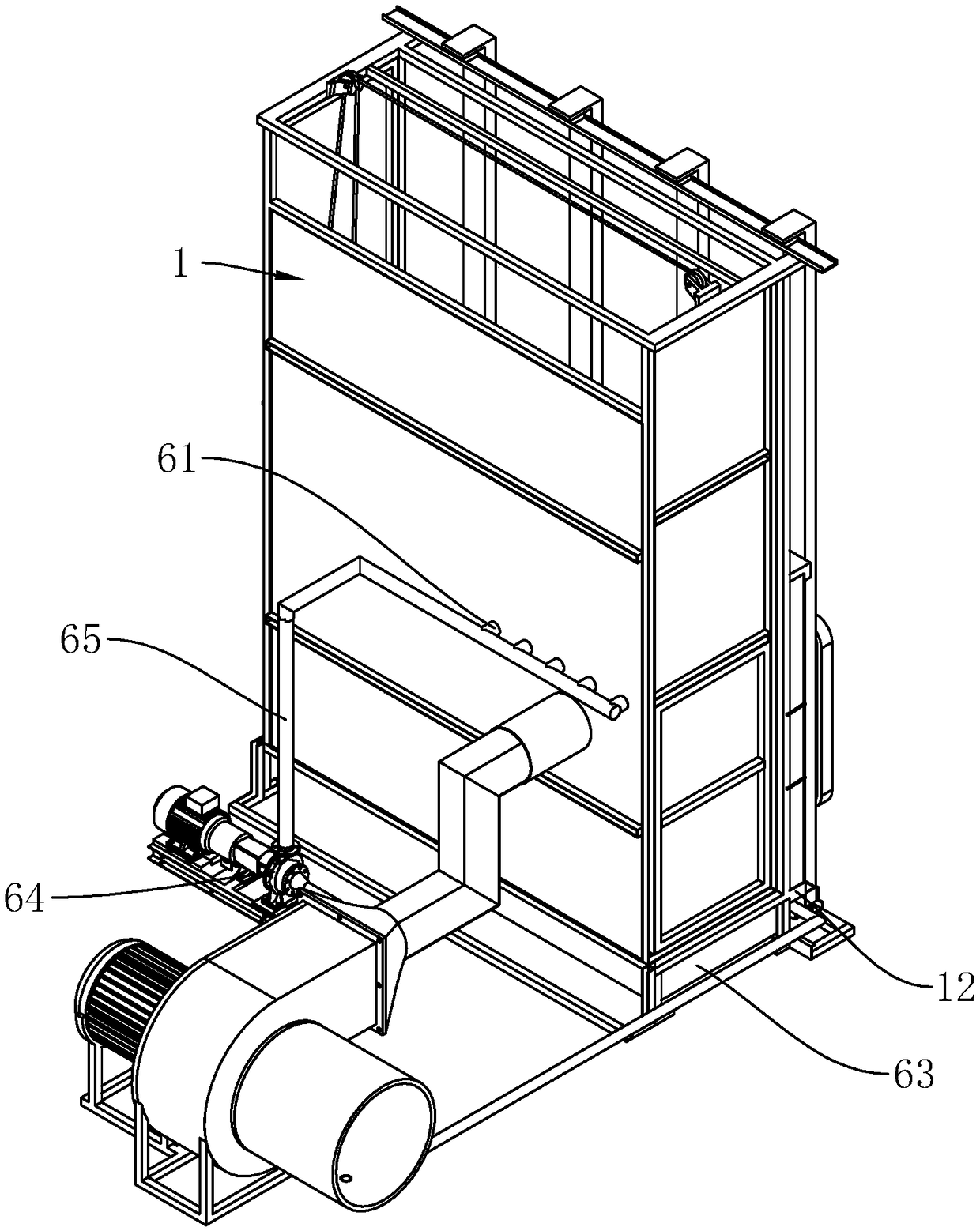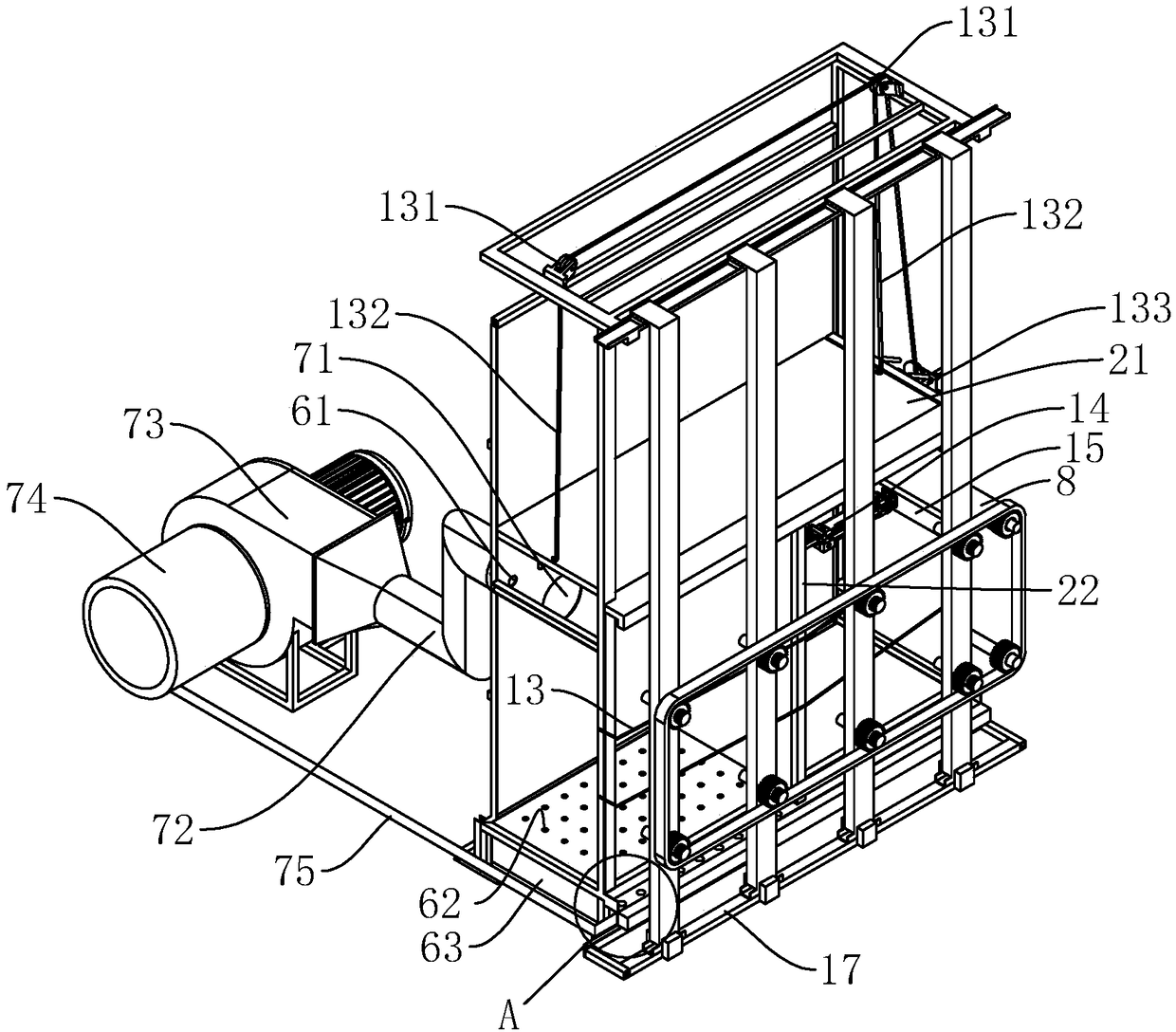Door and window physical property detection device
A technology of physical properties and testing equipment, applied in the direction of using liquid/vacuum for liquid tightness measurement, etc., can solve problems such as time-consuming, and achieve the effect of avoiding offset, ensuring experimental accuracy, and high synchronization
- Summary
- Abstract
- Description
- Claims
- Application Information
AI Technical Summary
Problems solved by technology
Method used
Image
Examples
Embodiment Construction
[0037]The present invention will be described in further detail below in conjunction with the accompanying drawings.
[0038] see figure 1 , a door and window physical performance testing equipment, including a box 1, a partition plate group 2 and a plurality of locking rods 3. The box body 1 is provided with an installation chamber 11 opening toward the locking rod 3 . The partition board set 2 is slidably connected inside the installation cavity 11 , and includes a first partition board 21 and a second partition board 22 that are perpendicular to each other and abut against the box body 1 . The partition plate group 2 separates the box body 1 into a cavity having the same shape and size as the object to be inspected 5 . The locking rod 3 compresses the object 5 to be inspected and the cavity separated from the box body 1 by the partition plate group 2 through the fastener 4 to form a detection cavity for detecting the physical properties of the object to be inspected 5 . ...
PUM
 Login to View More
Login to View More Abstract
Description
Claims
Application Information
 Login to View More
Login to View More - R&D
- Intellectual Property
- Life Sciences
- Materials
- Tech Scout
- Unparalleled Data Quality
- Higher Quality Content
- 60% Fewer Hallucinations
Browse by: Latest US Patents, China's latest patents, Technical Efficacy Thesaurus, Application Domain, Technology Topic, Popular Technical Reports.
© 2025 PatSnap. All rights reserved.Legal|Privacy policy|Modern Slavery Act Transparency Statement|Sitemap|About US| Contact US: help@patsnap.com



